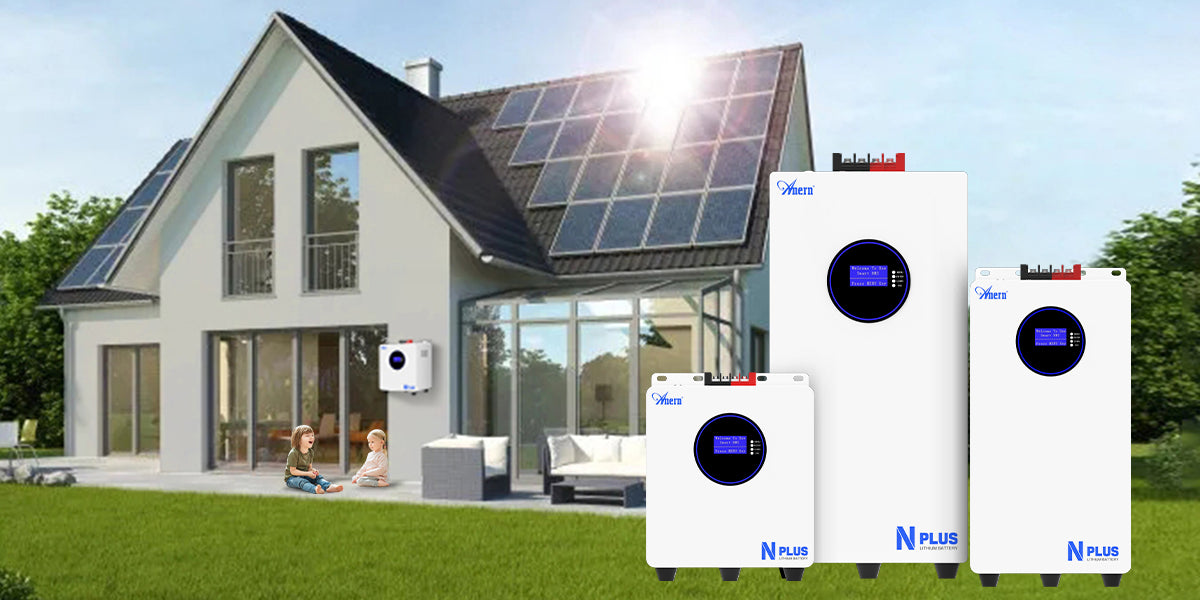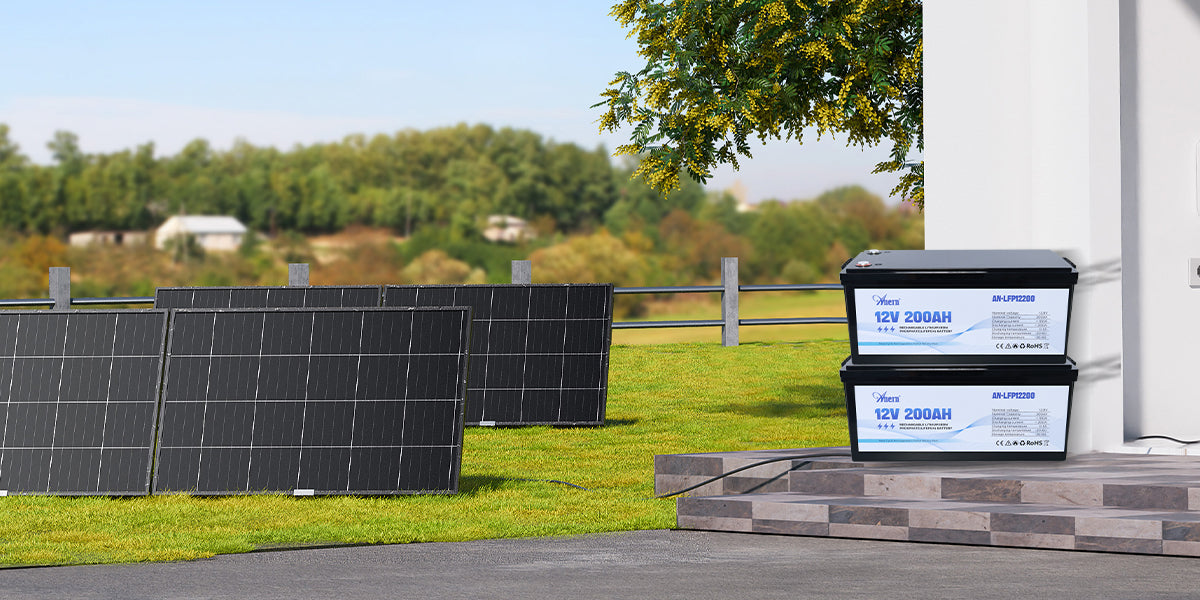Living off-grid needs smart energy planning. Power must be steady, safe, and ready when the sun goes down. That’s where lithium-ion batteries come in. They store solar power efficiently and work well in tough conditions.
Off-Grid Solar Systems
An off-grid solar system runs without any connection to the main electric grid. It produces and stores power for use day and night. These systems are common in remote areas, cabins, RVs, and for emergency backup setups. The key parts of an off-grid solar system include:
- Solar panels that collect energy from sunlight
- A charge controller that regulates the energy going into the battery
- A battery that stores power for later use
- An inverter that converts the stored energy from DC to AC
Without grid support, every part of the system must work together. The battery becomes the heart. It keeps lights on, powers appliances, and runs tools even at night or during cloudy days.
Not all batteries perform well under off-grid stress. Some fail too soon. Others lose charge too quickly. That’s why battery type matters.

Common Battery Types in Off-grid Solar Systems
| Battery Type | Cycle Life (Approx.) | Depth of Discharge (DoD) | Charging Speed | Maintenance | Weight | Efficiency (%) | Cost per kWh (est.) | Notes |
|---|---|---|---|---|---|---|---|---|
| Lithium-Ion (LiFePO4) | 3,000–6,000+ cycles | 80–95% | Fast | Low | Light | 92–98% | High | Long lifespan, excellent for frequent cycling, best for off-grid use |
| Lead-Acid (Flooded) | 300–500 cycles | 50–60% | Slow | High (water refills) | Heavy | 75–85% | Low | Low upfront cost, poor in deep cycle performance |
| Lead-Acid (AGM) | 500–1,000 cycles | 50–70% | Medium | Low | Heavy | 80–90% | Medium | Maintenance-free, more expensive than flooded lead-acid |
| Gel Cell | 600–1,000 cycles | 70–80% | Medium | Low | Heavy | 85–90% | Medium | Performs well in extreme temperatures, sensitive to overcharging |
| Nickel-Iron (NiFe) | 1,000–2,000 cycles | 70–80% | Slow | Medium | Very Heavy | 65–75% | Very High | Extremely durable, but low efficiency and high maintenance |
| Saltwater Battery | 2,000+ cycles | 80–90% | Slow | Low | Medium–Heavy | 85–90% | High | Non-toxic, recyclable, still rare and less commercially mature |
Advantages of Lithium-Ion Batteries for Off-Grid Solar
Older battery types were built for short-term use or light loads. Off-grid systems need more. Lithium-ion batteries offer features that match those higher demands.
- High Energy Density. Lithium-ion batteries store a large amount of energy in a small space. This means more power without taking up much room. A typical 10 kWh lithium battery can fit inside a compact case. In contrast, older battery types may need double the space for the same energy. For RVs or cabins, every inch counts.
- Long Cycle Life. One charge and discharge is called a cycle. Most lead-acid batteries last around 500 cycles. Lithium-ion batteries can reach 3,000 to 6,000 cycles or more. Some top-tier units go even higher. For daily solar use, this lifespan means years of stable service. A good lithium system can last 10 years or longer, with much less maintenance.
- Faster Charging. Lithium batteries accept a higher charge current. This means they refill faster when the sun is out. Short daylight hours or shaded panels are less of a problem. With the right charge controller, lithium batteries charge fully in a few hours. This gives you a longer window to use stored energy.
- Deep Discharge Capability. Most battery types should not be drained below 50% often. Doing so shortens their lifespan. Lithium-ion batteries can handle deep discharge levels, often down to 90% or more. This gives you access to more usable power from the same battery size. For example, a 10 kWh lithium battery may offer 9 kWh of usable power while a 10 kWh lead-acid battery may only offer 5 kWh usable.
- Lightweight and Compact. Lithium-ion batteries weigh less than traditional lead-acid types. A 100 Ah lithium battery may weigh around 25 lbs. The same capacity in lead-acid form could weigh over 60 lbs. In off-grid systems where transport or space is limited, weight becomes critical. RVs, boats, and remote shelters all benefit from lighter loads.
- Low Maintenance. Lithium batteries are sealed units. They do not need water refills or terminal cleaning. Many come with built-in battery management systems (BMS) that control safety, charge rates, and temperature.
- Safe and Stable Operation. Modern lithium batteries have protection features built in, such as overcharge protection, low voltage cut-off, temperature regulation, short circuit safety, etc.
How Big Should Lithium-Ion Batteries Be for Off-Grid Use?
Sizing depends on how much energy you use and how many days you want backup. Start with your daily usage in kilowatt-hours (kWh). Then match it to the battery’s usable capacity.
1. Calculate daily usage
Add the total power used each day. For example:
- Fridge: 1.5 kWh/day
- Lights: 0.6 kWh/day
- Laptop + phone: 0.3 kWh/day
- Water pump: 0.5 kWh/day
Total = 2.9 kWh/day
2. Decide on backup days
Do you want one day of backup? Two days? Most off-grid setups plan for at least 2 days of storage.
3. Apply a depth of discharge
Lithium batteries allow 90% usable capacity.
So, to cover 2 days:
2.9 kWh × 2 days = 5.8 kWh
Needed capacity = 5.8 ÷ 0.9 = ~6.4 kWh battery
A 7 kWh lithium battery would work well for this example.
4. Match with solar input
Your battery also needs to recharge fully during daylight. If your region gets 4 sun hours per day, you’d need at least:
6.4 kWh ÷ 4 h = 1.6 kW solar panel array
Round up to 2 kW for safe margin.
5. Consider inverter and load limits
Your inverter must handle the peak loads. If your water pump and fridge run at the same time, make sure the inverter’s rating supports the surge.
Embracing True Energy Autonomy with Lithium-Ion Solar Battery Power
A good off-grid system is more than panels and wires. The battery shapes your freedom. With lithium-ion storage, you gain longer life, better efficiency, and more usable energy per cycle. Solar power works best when it’s matched with the right storage. For off-grid life, lithium-ion is the gold standard.
FAQs about Powering Your Off-Grid System with Lithium-Ion
Q1: Are lithium-ion batteries safe for home use?
Yes. Most units come with built-in protection systems. These monitor temperature, voltage, and charging. When installed correctly, the risk of fire or failure stays low. Choose units certified for home or off-grid use.
Q2: Can lithium batteries work in cold climates?
They work well in cold conditions but should not be charged below freezing. Many models include low-temperature cutoffs or internal heaters. For winter cabins or mountain use, pick a model rated for low-temp performance.
Q3: Do lithium batteries need ventilation?
No. Unlike lead-acid types, lithium batteries do not release gas during use. They can be stored in enclosed spaces. Still, it’s good to keep the area dry and free of extreme heat.
Q4: What’s the difference between LiFePO4 and other lithium chemistries?
LiFePO4 (Lithium Iron Phosphate) is very stable, has a long cycle life, and is safe. It’s the most popular choice for off-grid solar use. Other types, like NMC (Nickel Manganese Cobalt), have higher energy density but lower cycle life and more heat risk.
Q5: How do I maintain my lithium solar battery?
Very little upkeep is needed. Avoid full discharge if possible. Keep the unit dry and shaded. Check charge status once a month. Use a good charge controller to protect from overvoltage or undervoltage.





Leave a comment
All comments are moderated before being published.
This site is protected by hCaptcha and the hCaptcha Privacy Policy and Terms of Service apply.